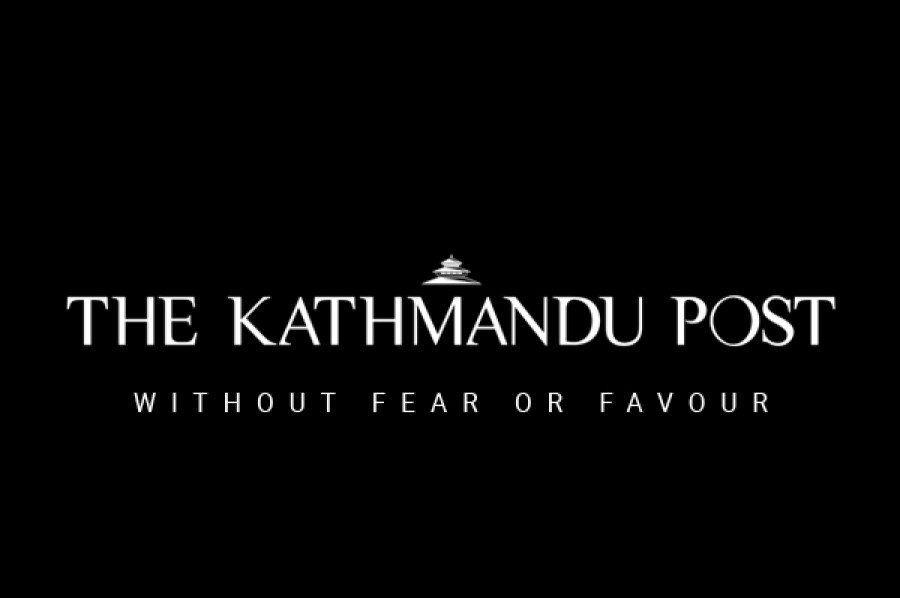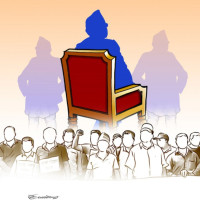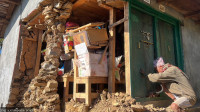Opinion
Medieval musings
Nepal is fixated on the present, making the medieval past irrelevant in both academia and popular history
Yogesh Raj
Of late, Nepali historical writings have ignored Nepal’s medieval society, culture, and political economy. Data indicates that medieval investigations are marginal in mainstream history teaching, research, and publishing. Since 1970, only five (out of 63) PhDs awarded by Tribhuvan University were explicitly related to the medieval period. Only 11 (out of 418) MA theses from that university have explored medieval themes. A paper on the medieval history of Nepal, which had been already relegated to an optional paper in the 1991 and 1999 revisions of the MA curricula, was deleted in the 2010 revision. The MA curricula at the Nepal Sanskrit University also do not have any dedicated paper on the medieval period. Among 223 academic books on historical themes published since 2002, only 15 can be said to be centred on that period. Medieval research and publication were once very strong in major public institutions such as the Nepal Academy and the Centre for Nepal and Asian Studies. That vanished about 15 years ago.
Beyond pomo-poco
Nepalis seem more fixated on the present than ever. Most public discussions on history begin with Prithvi Narayan Shah. The dominant thought today seems to trace the origins of all poverty and pains in Nepal to the Shah’s making of the centralised unitary nation and its consequences. In the same period, social sciences or sociology-informed disciplines have fashionably evoked ultra-modern or post-modern history in focussing on the present. When they sometimes enquire into the past, they find questions about the most recent past more productive. The medieval has thus become irrelevant in both academia and the popular historical imagination.
Assuming that the knots of today’s inequalities were freshly made is evidently very comforting, for it carries the hope that they can be explicated easily. But this approach utilises history to narrate yesteryears’ injustice to radically alter the present for a brighter future. One may also criticise such utilitarian views by suggesting that history is not merely a temporal context for bettering the future. History essentially helps us to assess the relative worth of today’s values and norms, and not simply to trace their origins in the chaotic data of the past. Historical writings give us criteria for deciding priorities of the present. Hence, concerns about finding the genealogy of today’s cruelties is not strictly historical, whereas exploring the ways Nepali society has been managing various forms of injustice in the past is.
In the same vain, discovering the origins of real inequalities on the ground is not a historical pursuit, but enquiring into the nature and distant motivations of such imbalances is. Historical research, in other words, leads to a violent blame game when directed towards finding the causes of today’s cultural and environmental pollution, but guides us to resolution if aimed at seeking linkages between the environment and the political economy, as Nepali society adapted to problems in the past. Investigating historical questions, one needs to patiently ask questions about the nature of longue durée changes and invent different kinds of tools and methodology of research than those employed for enquiring into—what pomo-poco (ie post-modern and post-colonial) fashionistas euphemistically call—the historical present.
Last traces
Medieval research in Nepal and in South Asia makes a long bibliography though. Particularly, regional and cultural histories produced by university-based scholars have either centred upon or dealt with the medieval period. Outside the universities, proponents and activists of many ethnic communities, nationalities, and classes have been digging into their medieval language, memory, and rituals in order to keep themselves relevant in identity-based politics. These works have brought out some broad generalisations and a few tendencies of the ancient and medieval histories of people living within and at the margins of the boundaries of the present day Nepal.
Concurrently, source materials for the period have been published in abundance in recent years. These include Dhanavajra Vajracharya’s Early Medieval Inscriptions and Medieval Inscriptions while Mohan Prasad Khanal’s A Millennium of Nepali Language totals more than a 1,000 stone inscriptions. More than 2,000 palm-leaf deeds have been published in several issues of the journals Purnima, Rolamba, and Pasuka together with Shankar Man Rajvamshi’s four-volume Deeds on Land. The economic life of several religious centres can now be gleaned through the documents published. Works on Rudravarna Mahavihar by Bernard Kolver and Hemraj Shakya, on Changunarayan by Mohan Khanal, on Pasupatinath by Govinda Tandon, and on Thabahil by Bhagavat Narsingh Pradhan may be selectively cited.
Hundreds of colophons have been brought to light by Luciano Petech in his Medieval Nepal and by Hariram Joshi in Medieval Colophons. Thousands of medieval songs have been published by Janaklal Vaidya in The Poetical Works in Nepalbhasha and by Chatrabahadur Kayastha in several volumes. The narratives of several medieval kingdoms, such as Suryamani Adhikari’s works on Tanahu and Jumla, Rajaram Subedi’s on Kaski, Mohan Khanal’s on the Sen Kingdom and Tek Bahadur Shrestha’s on Parvat have been put forth. More than 200,000 manuscripts-microfilm from the Himalayas, Tarai, and the Kathmandu regions, now preserved in the National Archives, together with several public (such as Asa Saphu Kuthi in Kathmandu and Lotus Research Centre in Lalitpur) and private archives provide valuable mines of information for the medieval period.
Reimagining the medieval
Innovative lines of enquiry, new tools of analysis, and thought-provoking arguments have been opened up in Dhanavajra Vajracharya’s Historical Analysis of the Gopalarajvamshavali; Gyanmani Nepal’s History of Early Medieval Period; Aisvaryalal Pradhananga and Ramesh Dhungel’s Economic History of Medieval Period; Suryamani Adhikari’s The History of the Khas Empire; Rajaram Subedi’s Medieval History of the Karnali Region; and Purushottamlochan Shrestha’s Anata-lingesvar. However, some have argued that both the number and quality of medieval research have been on the decline in Nepal and in South Asia. Sheldon Pollock has noticed the near dearth of experts on medieval languages and scripts in the deserting field of classical studies all over the world. The doyen of Nepali history, Mahesraj Panta, recently commented in an op-ed that the “ability to correctly copy extracts from the published corpus, not to speak of the ability to read from the originals, is non-existent even among reputable scholars”. There is thus a need to reassess the achievements and trends of medieval research, identify how these studies can provide perspectives on present day concerns, and lay out future directions for the discipline.
Several themes of enquiry may further be taken up: Which period in Nepali history can be called medieval and why? Does medieval research demand new sources and innovative techniques? What were the economic underpinnings of religion in the medieval period, such that the current demands for a referendum on the secular Nepali state? Is the nature and character of medieval governance any different than today’s, especially from the perspective of appetites for rent-seeking and fiscal disobedience? Was medieval society feudal or, given the strong institutions of public charity and assistance, welfarist? What sorts of understanding will reveal the nexus between academic contours and the political economy of medieval research? And, lastly, where does Nepal stand when compared to medieval research in Nepal, South Asia and elsewhere?
As a medievalist, this writer can claim with a certain degree of confidence that enquiries into these themes will produce rare purposeful knowledge into why some seemingly grave and intractable problems faced by Nepal today are essentially fictions.
Raj is a historian based at Martin Chautari




 8.12°C Kathmandu
8.12°C Kathmandu










